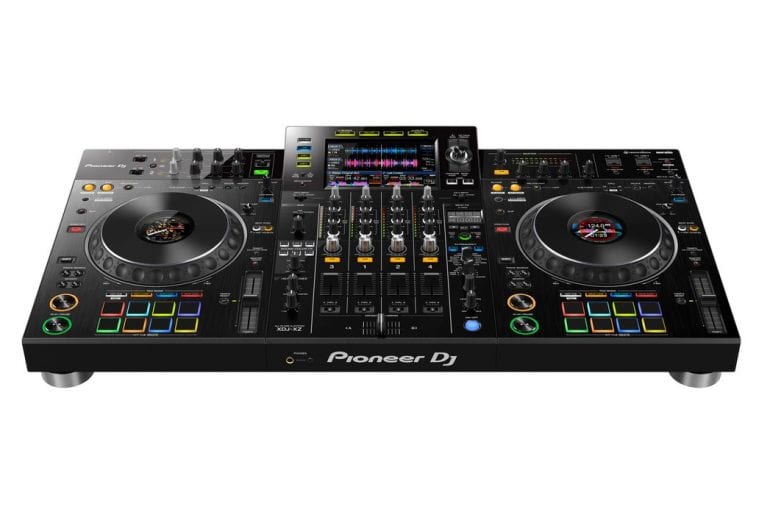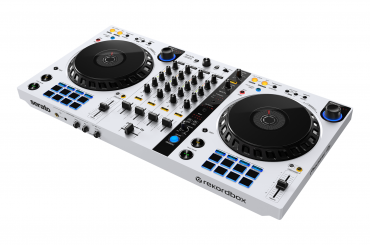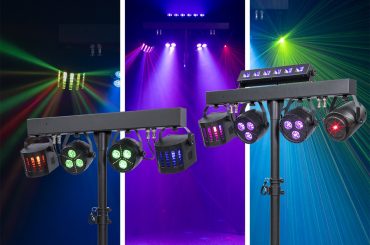It feels as if I’ve said this a lot in recent years, but as I survey the DJ hardware and software landscape, I continue to feel like there’s no better time to be a DJ. There are so many ways to perform now — so much gear, supporting so many different approaches and styles — I can’t help but feel great about the state of the DJ universe (well, other than the lingering impacts of a global pandemic, anyway). From entry level to midrange to the stuff of pros, we are all (as the Brits would say) spoiled for choice.
At the Winter NAMM show in Anaheim, Calif., this past January, Pioneer DJ showed off its latest entry, an all-in-one controller dubbed XDJ-XZ. I recently had a chance to spend a couple of weeks with a review unit, and I’m happy to report that Pioneer DJ has still got it going on — should anyone have had any doubts.
Whether you call them “all-in-one” or “standalone” controllers, they’re sort of the rage these days. These DJ controllers are designed for party life without a laptop — a time, quite frankly, I never thought I’d see (but am happy to do so). As much as I love my DJ software of choice (and I do), computers occasionally have issues, and it is just one more thing to lug around gig to gig. Having the option to load up some digital media on some sort of USB mass-storage device and plug it directly into a controller to start a gig certainly has its merits.
It’s important to note that many of these all-in-one units also provide support for laptop-based DJing, providing an additional layer of flexibility, and the XDJ-XZ is no exception – more on that in a moment.
First Impressions: Let’s just say that, in terms of first impressions, the Pioneer XDJ-XZ certainly makes one. It comes in a shipping carton that is roughly 1- by-2- by-3-feet — and tips the scales at a hefty 35 pounds. Strip off all the packing material, and it’s still a very substantial 29 pounds of hardware, which stands 5 inches off the desk, and is 18-inches deep and 35-inches wide. This forces me to take issue with Pioneer DJ’s website stating that it’s “easy to carry,” but the recessed spaces on the unit’s sides at least provide you with a solid grip while you’re hefting it around.
One of the unit’s key benefits is that it provides what is in many ways Pioneer DJ’s revered NXS2 configuration in a single piece of hardware. Indeed, it does “read” in some respects as a pair of CDJ-2000NXS2 decks with a DJM-900NXS2 mixer glued in between, with some of the parts moved around. For DJs accustomed to ubiquitous Pioneer DJ hardware of the more conventional type, the familiarity will resonate.
The unit has a number of ways to get the music into your performance. There are two separate USB connectors on the top for USB mass-storage devices for a start. You can use the unit as a very nice Serato DJ controller while taking advantage of the unit’s key hardware features. Or, you can use Pioneer DJ’s own “rekordbox” performance features. And finally, Pioneer DJ has equipped the XDJ-XZ with Pro DJ Link. While I was unable to test this personally, you can connect Pro DJ Link-equipped CDJs to the system, and get full audio and music browsing integration right on-board the controller.
It’s worth noting that the XDJ-XZ unlocks the full Serato DJ Pro and unlocks certain features of rekordbox as well (more on that in a moment) when it’s connected to your computer via USB.
Doing a quick test with Serato DJ Pro worked quite well (once I upgraded the unit’s firmware to unlock that capability). But inserting my USB key that contains a small music collection I use for DJ-gear testing was a slightly different story. I was able to get to the fun fairly quickly, but it was rapidly evident that the on-board music analysis of the XDJ-XZ is limited strictly to tempo (BPM); there is no on-board key detection. If you want full track analysis, Pioneer DJ’s rekordbox software is required as a pre-analysis step. Having no dependency whatsoever on external software for full functionality would have been preferred for a truly standalone solution.
Whether you’re interested in rekordbox beyond analysis depends on myriad factors, including how you perform, what sort of music management you’re looking for, and likely whether you’ve used rekordbox before (and want to continue to do so). The product has a pretty wide array of library-management and performance capabilities that will help make the XDJ-XZ truly sing. While some of the features are unlocked at no additional cost simply by having the XDJ-XZ connected to your computer via USB, others require a monthly subscription plan.
I’ve been quite vocal on these pages about subscription plans in the DJ and studio-production spaces; I still have trouble seeing how it tangibly benefits and provides demonstrable value to the consumer over the classic perpetual (buy once and use indefinitely) licensing model. After all, this isn’t Netflix where you get access to something new pretty much every day in exchange for your monthly bill.
To check out more tech reviews, click here.








